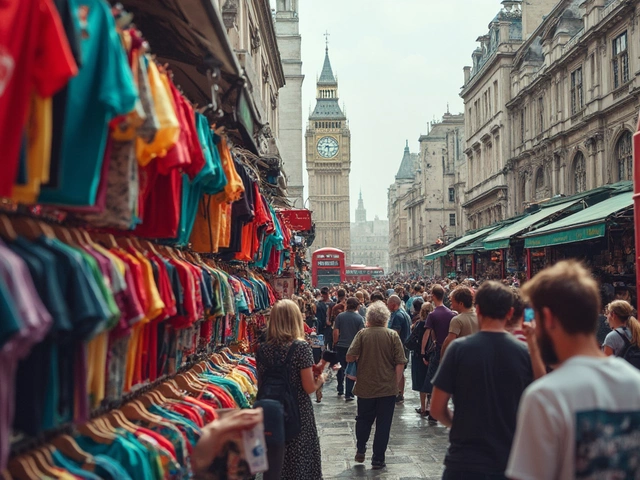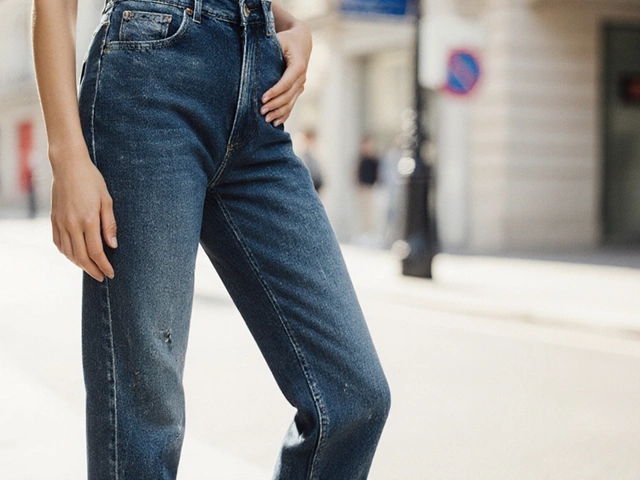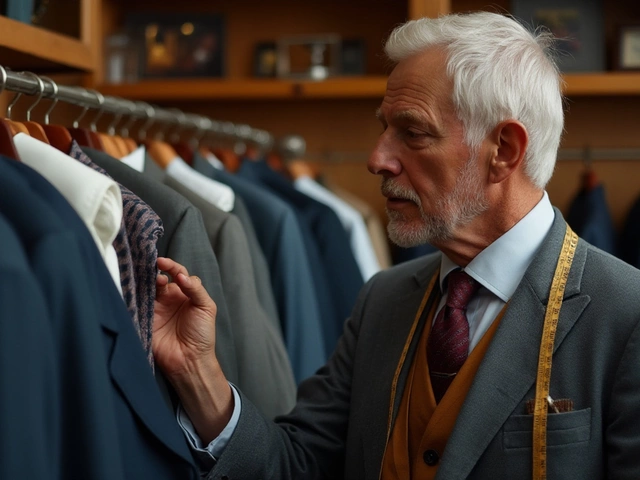Is 20-Year-Old Clothing Considered Vintage? A Look at Jackets
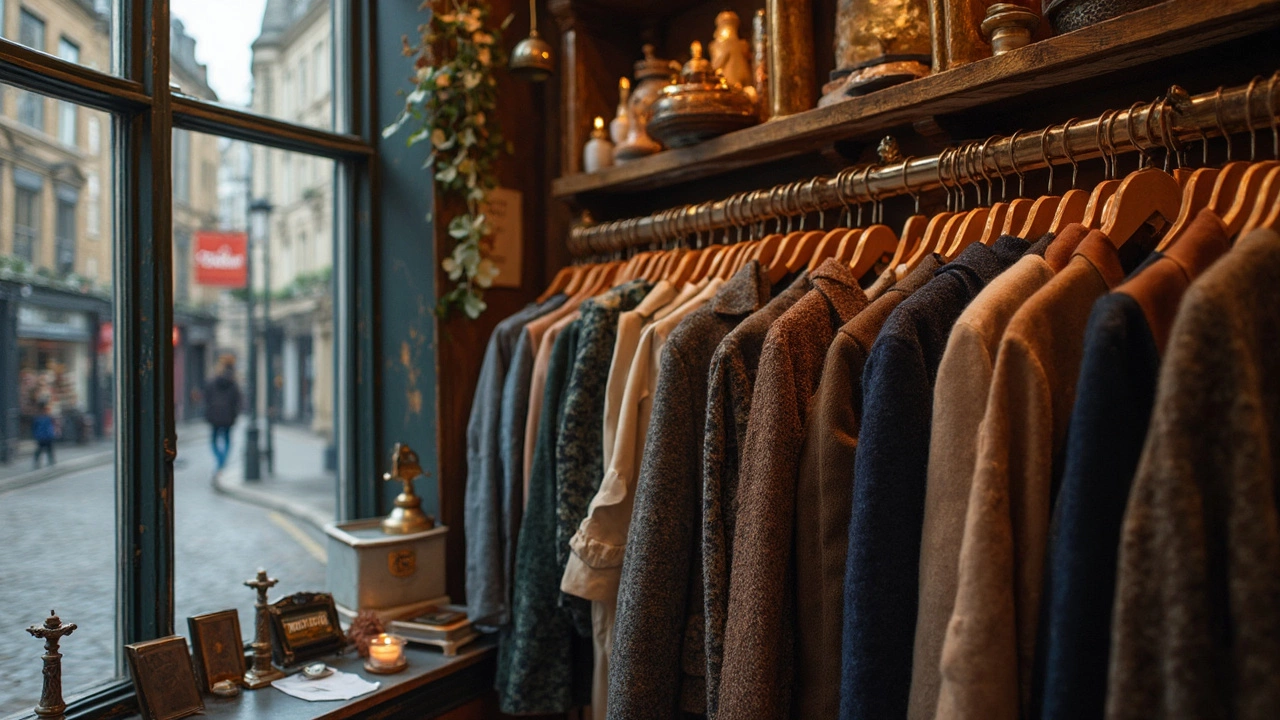
- Cleo Fairchild
- 9 February 2025
- 0 Comments
So, you’ve dusted off a jacket from 2005 and you’re wondering, does it qualify as vintage? It’s a question that gets many fashion enthusiasts chatting. Technically speaking, fashion experts generally agree that clothing becomes vintage when it’s 20 to 100 years old, capturing the style and era of its time.
This age range gives you the green light to start calling your beloved jacket vintage. It’s not just about the age, though. Vintage pieces often offer a glimpse into fashion history, embodying design trends and craftsmanship that aren’t found in today’s mass-produced apparel.
But hey, why is vintage even a thing? Nostalgia plays a big role—people love owning a piece of the past. Plus, there’s the uniqueness factor; wearing something not everyone else has makes a bold statement. And let’s not forget sustainability. By reusing clothes, you’re reducing waste. So, holding onto those 20-year-old jackets might be a more eco-friendly choice than buying new ones.
- Understanding Vintage in Fashion
- When is Clothing Considered Vintage?
- Exploring Vintage Jackets
- Tips for Wearing and Buying Vintage
Understanding Vintage in Fashion
At its core, vintage clothing is all about age and style. But what really defines the term 'vintage' in fashion? First off, clothing isn’t automatically vintage just because it’s old. The piece should reflect the notable styles and trends of its time. This means your jacket from the early 2000s, with its distinct Y2K vibes, could very well fit the bill now.
Many people have their own take on what vintage means, but generally, the fashion world agrees on the 20 to 100-year rule. Anything older than that might be approaching 'antique' status. But why all the fuss about vintage anyway? It’s about nostalgia, uniqueness, and sustainability. Vintage pieces let people relive styles of the past, and they’re great for standing out from the crowd.
The Role of Style Eras
Vintage isn’t just about numbers; it’s about history and culture. Each decade has its own identity. The 70s were all about bold prints and earthy tones, while the 80s rocked shoulder pads and dramatic silhouettes. So, when you’re considering if something like a 20-year-old jacket qualifies as vintage, think about the style it represents. Does it showcase a trend that dominated its era?
- Fashion identity: Reflects the era’s vibe and trends.
- Uniqueness: Not mass-produced in today’s market.
- Eco-friendliness: Helps reduce fashion waste.
In a world overflowing with fast fashion, going vintage helps keep the wardrobe interesting, sustainable, and rooted in history. Knowing when and why something is vintage makes all the difference in how you style it or decide to invest in it.
When is Clothing Considered Vintage?
So, what makes that old jacket vintage and not just, well, old? It boils down to a couple of factors: age, design, and sometimes, the materials used. In fashion circles, a piece hits the vintage mark when it reaches 20 years of age. This applies to everything, including those cherished jackets from your early 2000s collection.
Why the 20-year mark, you ask? It's generally accepted that 20 years is long enough for trends to come full circle, allowing older styles to regain popularity among fashion lovers and collectors. Scholarly journals even highlight that trends recycle approximately every 20 to 30 years, thus cementing this age as a vintage benchmark.
What Else Defines Vintage?
Beyond age, the distinct style of a past era is crucial for the vintage label. Does that jacket scream 90s grunge or early 2000s minimalism? That’s a good sign. These pieces provide a stylistic snapshot of history, reflecting the tastes and cultures of their time.
- Quality and Craftsmanship: Older garments often boast craftsmanship that today’s fast fashion items just can’t compete with.
- Rarity: Unlike mass-produced fashion items of today, vintage clothes were often made in smaller batches, adding an additional layer of uniqueness.
- Labels and Designers: Sometimes the origins of the clothing matter. A designer label, even from a forgotten line, can elevate a piece to vintage status.
Simply put, if you’re eyeing that old jacket and it fits within these parameters, congratulations! You’ve got yourself a vintage jacket.
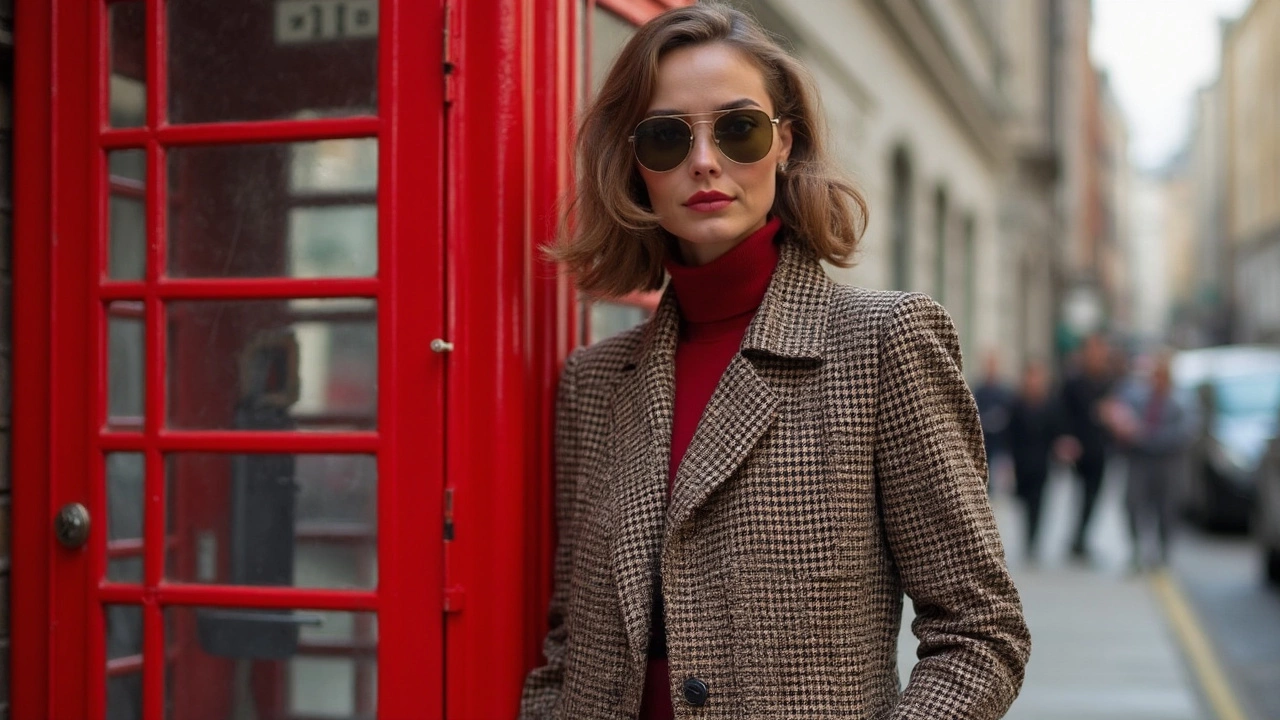
Exploring Vintage Jackets
When it comes to vintage clothing, jackets are often the crown jewels of anyone’s collection. Why? Because they tell stories, hold history, and keep us warm in style. If you’re diving into the world of 20-year-old jackets, there are some cool things you might want to know.
Iconic Styles and Eras
Each decade has its unique jacket styles that now earn the label of vintage. From the oversized denim jackets of the 80s to the minimalist leather ones from the 90s, they all have a flair that's hard to recreate today. Vintage jackets like bomber jackets and varsity jackets gained popularity again, carried forward by both their timeless design and the nostalgia they evoke.
A nifty fact? The 2000s saw a revival of military-style jackets and parkas, which are now just stepping into the vintage designation.
Tips for Identifying Vintage Quality
Not all old jackets are vintage-quality. What sets some apart is their craftsmanship. Look for signs like:
- Thick, durable fabrics, often with natural fibers.
- Detailed stitching and sturdy buttons or zippers.
- A label from a now-defunct brand that was popular in its time.
These features often indicate a well-made piece that’s stood the test of time, making it a worthy addition to your wardrobe.
Embracing Vintage Jackets in Modern Style
Integrating a vintage jacket into your current wardrobe is easier than you might think. It's all about balance. Pair a retro jacket with modern pieces for a refreshing look. Think of a classic biker jacket worn over a simple white tee and high-waisted jeans—it’s a timeless combo! It not only brings a bit of fashion history but adds personality to your outfit.
The best part? Wearing vintage jackets is a sustainable choice. By opting for vintage, you’re also reducing demand for new production, which saves resources and cuts waste.
Tips for Wearing and Buying Vintage
Shopping for vintage clothing like jackets can be a thrilling treasure hunt, but it comes with its own set of rules. Whether you're looking to wear or collect pieces, there are a few savvy tips to ensure you make the best picks.
Know What You're Looking For
First things first, have a clear idea of what you’re after. Are you in the market for a classic aviator leather jacket or a denim jacket that screams the '90s? Having a vision helps narrow down your choices amidst the sea of options.
Inspect the Condition
Condition is king in the vintage world. Check for signs of wear like tears, stains, or missing buttons. It’s important to know what you can fix and what’s a deal-breaker. Don’t shy away from a good bargain if it only needs minor mending.
Size Doesn't Always Matter
Sizes have changed over the years, so don’t rely solely on the tag. Try things on whenever possible, or get familiar with measurements rather than sizes to ensure a good fit.
Embrace Sustainability
Buying vintage isn’t just stylish; it’s environmentally friendly too. By opting for pre-loved goods, you’re making a more sustainable choice. Plus, vintage pieces are often made with higher quality materials, giving them a longer life.
Mix Modern with Vintage
When it comes to styling vintage pieces like jackets, balance is key. Pair a vintage jacket with modern basics to keep your look fresh and avoid slipping into a costume-y territory. A vintage blazer over a simple t-shirt and jeans is an effortless win.
Where to Buy
You can find vintage clothing in thrift stores, vintage boutiques, online markets, and even estate sales. Each option has its perks—boutiques offer curated selections, while thrift stores might have hidden gems at better prices.
- Online platforms like Etsy and eBay have loads of options but always check seller ratings and return policies.
- Local flea markets often have unique finds at reasonable prices.
- Some cities host vintage fairs and pop-up events where design and authenticity are often a top focus.
| Location | Advantages | Challenges |
|---|---|---|
| Thrift Stores | Budget-friendly, hidden gems | Time-consuming, limited selection |
| Online Markets | Wide variety, convenient | Inconsistent sizing, shipping costs |
| Vintage Boutiques | Curated selection, high quality | Higher prices, limited pieces |
With these tips in mind, you can navigate the world of vintage jackets with confidence and style!
